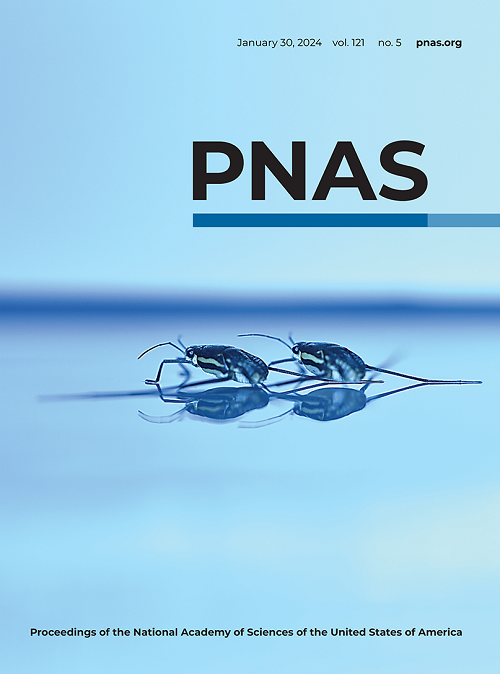种群大小与生殖寿命相互作用,形成种系突变率
IF 9.4
1区 综合性期刊
Q1 MULTIDISCIPLINARY SCIENCES
Proceedings of the National Academy of Sciences of the United States of America
Pub Date : 2025-05-20
DOI:10.1073/pnas.2423311122
引用次数: 0
摘要
突变率在生命之树上有许多数量级的变化,在繁殖速度快、有效种群规模大的物种中,每一代发生的突变较少。一个令人信服的解释是,大的有效种群规模有助于选择对抗弱有害的“突变等位基因”,如调节细胞分裂或干扰DNA修复分子效能的变异。然而,虽然单细胞分裂的保真度在很大程度上决定了微生物的突变率,但在长世代的多细胞物种中,突变率与DNA损伤和修复的分子决定因素之间的关系更为复杂。由于长世代为每一代的突变积累留下了更多的时间,我们假设长世代时间可能会放大任何损伤剂或DNA修复缺陷的适应性后果,从而在精原细胞或卵母细胞中产生额外的突变。这导致了一种违反直觉的预测,即每代生殖系突变率最高的物种也是具有最有效的机制来避免和修复其生殖细胞突变的物种。与此一致的是,我们发现生殖细胞的突变率与世代时间呈负相关;相比之下,在青春期前发育过程中发生的种系突变的数量随着世代时间的增加呈微弱的上升趋势。我们的研究结果与最近的发现相一致,即寿命最长的物种在成年体细胞组织中突变率最低,这可能是由于选择将一生的突变负荷保持在有害的阈值以下。本文章由计算机程序翻译,如有差异,请以英文原文为准。
Population size interacts with reproductive longevity to shape the germline mutation rate
Mutation rates vary across the tree of life by many orders of magnitude, with fewer mutations occurring each generation in species that reproduce quickly and maintain large effective population sizes. A compelling explanation is that large effective population sizes facilitate selection against weakly deleterious “mutator alleles” such as variants that modulate cell division or interfere with the molecular efficacy of DNA repair. However, while the fidelity of a single cell division largely determines microorganisms’ mutation rates, the relationship of the mutation rate to the molecular determinants of DNA damage and repair is more complex in multicellular species with long generation times. Since long generations leave more time for mutations to accrue each generation, we posit that a long generation time likely amplifies the fitness consequences of any damage agent or DNA repair defect that creates extra mutations in the spermatogonia or oocytes. This leads to the counterintuitive prediction that the species with the highest germline mutation rates per generation are also the species with most effective mechanisms for avoiding and repairing mutations in their reproductive cells. Consistent with this, we show that mutation rates in the reproductive cells are inversely correlated with generation time; in contrast, the number of germline mutations that occur during prepuberty development trends weakly upward as generation time increases. Our results parallel recent findings that the longest-lived species have the lowest mutation rates in adult somatic tissues, potentially due to selection to keep the lifetime mutation load below a harmful threshold.
求助全文
通过发布文献求助,成功后即可免费获取论文全文。
去求助
来源期刊
CiteScore
19.00
自引率
0.90%
发文量
3575
审稿时长
2.5 months
期刊介绍:
The Proceedings of the National Academy of Sciences (PNAS), a peer-reviewed journal of the National Academy of Sciences (NAS), serves as an authoritative source for high-impact, original research across the biological, physical, and social sciences. With a global scope, the journal welcomes submissions from researchers worldwide, making it an inclusive platform for advancing scientific knowledge.

 求助内容:
求助内容: 应助结果提醒方式:
应助结果提醒方式:


